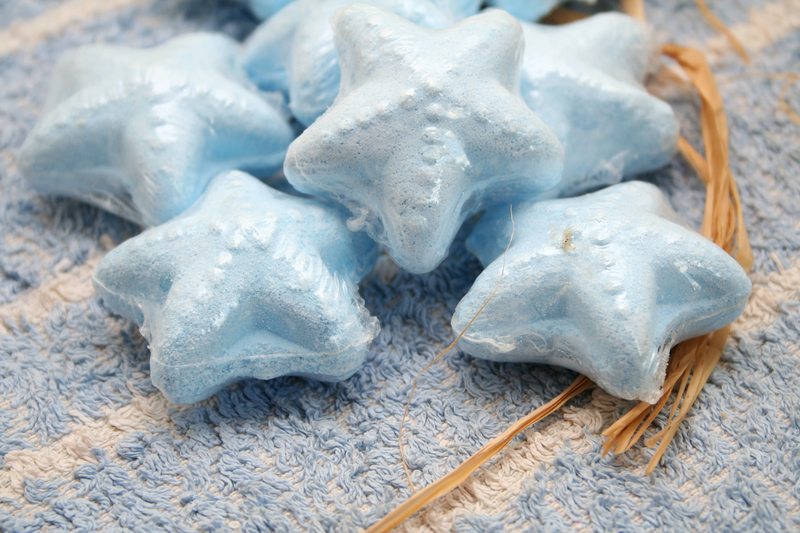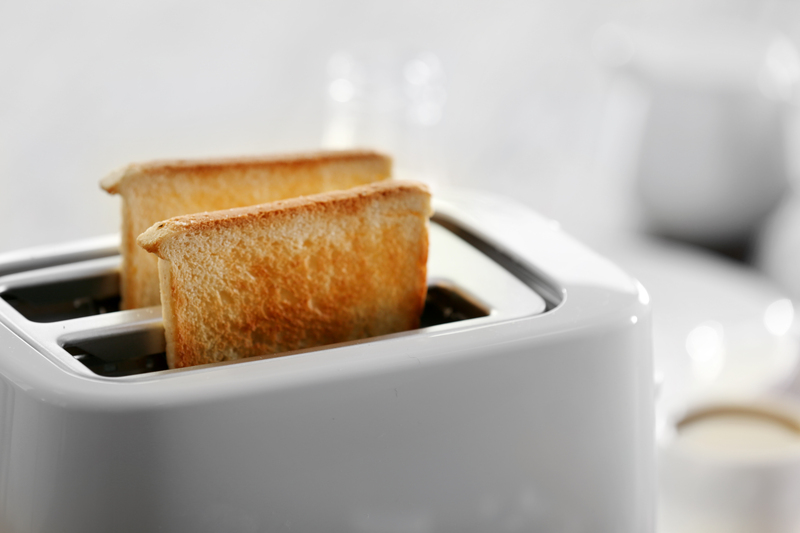Preserve Your Covers: The Right Way to Wash Them Without Shrinkage
Posted on 26/08/2025
Preserve Your Covers: The Right Way to Wash Them Without Shrinkage
Does washing your cushion covers or duvet covers leave you anxious about shrinkage or damage? Many people notice that after a few washes, their favorite slipcovers or pillowcases no longer fit. In this comprehensive guide, you'll discover the best methods for washing covers without shrinkage, as well as tips to maintain their vibrancy and longevity. Whether you're dealing with couch covers, cushion covers, or delicate designer textiles, follow this ultimate guide to preserve your home essentials for years to come.
Why Do Covers Shrink in the Wash?
Before diving into the washing methods, it's crucial to understand why covers shrink. Various factors can cause your slipcovers, pillow covers, or duvet covers to lose their original size. Here are some primary reasons:
- High Water Temperature: Hot water causes fibers to contract, especially cotton and linen blends.
- Dryer Heat: Excessive heat in the drying process can further shrink or distort fabric.
- Improper Washing Cycles: Aggressive cycles and agitation can tangle or break fibers.
- Fabric Type: Natural fibers like cotton, wool, and linen are more prone to shrinkage than synthetics.
- Pre-existing Fabric Treatment: Some covers aren't pre-shrunk by manufacturers, making them more susceptible.
What Makes Fiber Shrink?
Shrinkage happens when fabric fibers--especially those from natural materials--relax and tighten during washing and drying. For example, cotton fibers expand in water, and if dried with high heat, they contract to a denser structure. The wrong method will damage not only the fit but also the texture and color of your covers.

Understanding Fabric Care Labels
Before washing any cover, always check the care label. Most manufacturers include a tag with cleaning recommendations. Misreading or ignoring these suggestions can easily lead to disaster. Look for information on:
- Maximum water temperature
- Recommended detergents or soaps
- Safe drying methods
- Special instructions (like "hand wash only" or "dry clean")
Tip: If a cover says "dry clean only", don't risk it in your home washer. The manufacturer has determined it requires gentle professional care.
How to Wash Slipcovers and Cushion Covers Without Shrinkage
General Best Practices
If you want to preserve your covers and prevent shrinkage, follow these universal steps:
- Remove covers promptly: Don't let them sit, crumpled, in a laundry basket or washer.
- Pre-treat stains gently: Use mild stain removers, avoiding harsh bleaches or spot treatments that damage fibers.
- Close zippers, buttons, or Velcro: This prevents the cover from snagging or stretching during the wash.
- Turn covers inside out: This minimizes friction and preserves surface appearance.
The Right Washing Machine Settings
The safest choice is the cold water cycle with a gentle or delicate setting. Here's why:
- Cold water reduces the thermal shock that triggers shrinkage.
- Gentle spin avoids stretching or stressing seams.
- Lower detergent amounts prevent residue buildup, which can stiffen and distort fabric.
Don't overload your machine. Wash covers separately or in small loads so water and detergent can circulate freely. This also minimizes excessive friction, which can weaken fibers.
Hand Washing: The Safest Method to Prevent Shrinkage
If you're anxious about precious or antique covers, hand washing is often best:
- Fill a sink or bathtub with cool water and add a mild, non-bleach detergent.
- Gently swirl the cover but avoid scrubbing, wringing, or twisting.
- Let it soak for 10-15 minutes, then rinse with cool water until all soap is gone.
- Press out excess water by rolling in a towel. Do not wring.
- Lay flat on a clean, dry towel or on a drying rack away from direct sunlight.
Hand washing drastically decreases agitation and thermal shock, two leading causes of shrinkage.
Drying Covers Without Causing Shrinkage
Why Tumble Dryers Are Dangerous
The main culprit behind shrunken covers is the household dryer. High heat not only tightens fibers but can also bake-in creases or even damage zippers and fasteners.
If possible, avoid the dryer altogether. Instead, practice these tips:
- Reshape covers when damp: Pull gently at seams and corners to return them to their original form.
- Lay flat or hang evenly: Draping over a wide rack or a clothesline, not a skinny wire, preserves shape and prevents stretching.
- Air dry away from heat or sun: Keep textile colors vibrant and prevent fiber breakdown.
If You Must Use a Dryer
Sometimes, quick drying is necessary. In those cases:
- Use the lowest heat setting or, ideally, a no-heat "air dry"/"fluff" cycle.
- Remove covers while still slightly damp to reshape and avoid over-drying.
Special Considerations for Different Types of Covers
Duvet Covers and Bed Covers
Duvet covers are typically larger and more prone to tangling or distortion. Always:
- Turn inside out for extra protection.
- Use a large capacity machine, if available.
- Wash alone with cold water and a mild detergent.
- Dry with tennis balls or dryer balls (on no heat) to maintain fluff.
Sofa, Couch, and Slipcovers
Sofa and slipcovers often have structured sewing and may include zippers or Velcro. For these:
- Spot clean areas in between seasonal washes.
- Don't wash too frequently--over-washing causes more wear and potential for shrinkage.
- Check seams after each wash to ensure integrity.
Delicate and Designer Covers
For wool, silk, embroidered, or bespoke covers:
- Hand wash or dry clean only.
- Never use bleach or harsh chemicals.
- Test a small area if unsure about colorfastness.
Eco-Friendly Tips to Wash Your Covers the Right Way
Preserving your covers and protecting the planet can go hand in hand. Choose eco-friendly detergents and avoid disposable dryer sheets which add chemicals and can stiffen fibers. Air drying not only prevents shrinkage but saves energy and reduces wear.
When possible, use a cold cycle, which uses less energy and is gentler on both fabric and colors. Your covers will last longer, and so will the environment.
Common Mistakes to Avoid When Washing Covers
- Using Hot Water: Even if a cover is soiled, never default to hot washes unless specified.
- Skipping Pre-treatments: Directly washing set-in stains often "bakes" them into fibers.
- Over-Drying: Leaving covers in the dryer causes shrinkage and misshapen forms.
- Neglecting Fasteners: Forgetting to zip or secure covers leads to stretching and snags.
- Not Reshaping While Damp: Covers need gentle stretching to maintain form after washing.

Frequently Asked Questions: Washing Covers Without Shrinking
Can I reverse shrinkage if my covers already shrank?
Unfortunately, fabric fibers that have contracted typically can't be restored to their original size. Some minor stretching may be possible by soaking in lukewarm water and gently stretching while damp, but results are usually minimal.
Should I wash new covers before first use?
Washing new covers is often recommended to remove factory residues. However, always use cold water and gentle cycles. If you're anxious about shrinkage, check for "pre-shrunk" labels or test with a small, hidden area first.
How often should I wash covers?
Duvet covers: Every 1-2 weeks, sofa and cushion covers: Every 1-3 months (or spot-clean as needed). Frequent washing wears out textiles faster, so only wash as required for cleanliness.
Is fabric softener safe for all covers?
Fabric softener can coat fibers, sometimes causing them to repel water or stiffen after multiple washes. For delicate, natural, or "performance" fabrics, skip the softener and use white vinegar as a natural alternative during rinse cycles.
Conclusion: The Best Way to Wash Covers and Keep Them Like New
Preserving your duvet covers, slipcovers, and cushion covers requires a blend of knowledge and gentle care. By following these expert tips on the right way to wash your covers without shrinkage, you'll extend the life of your textiles and keep your home looking fresh and inviting.
- Always check care labels first.
- Opt for cold water and delicate cycles.
- Choose air drying over heat when possible.
- Reshape items while damp for a flawless fit.
Your covers are an investment in comfort and style--treat them with the right washing methods so every wash leaves them as cozy and beautiful as the day you bought them.




